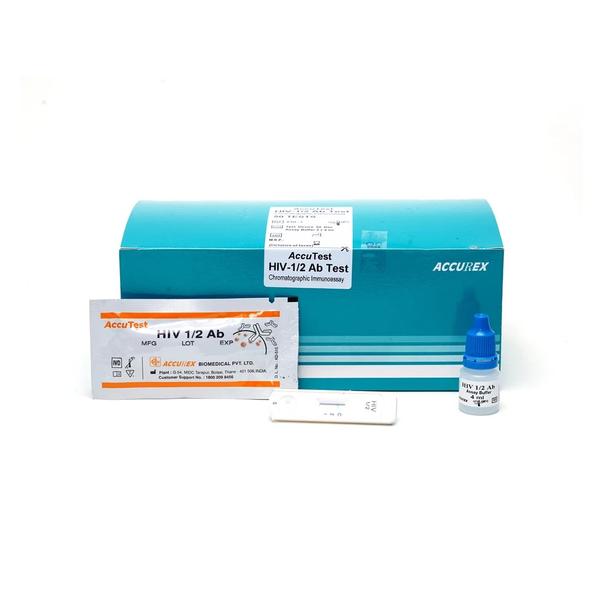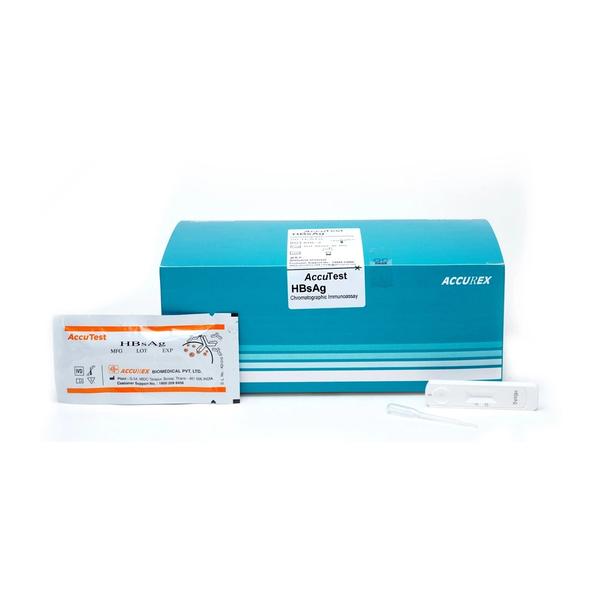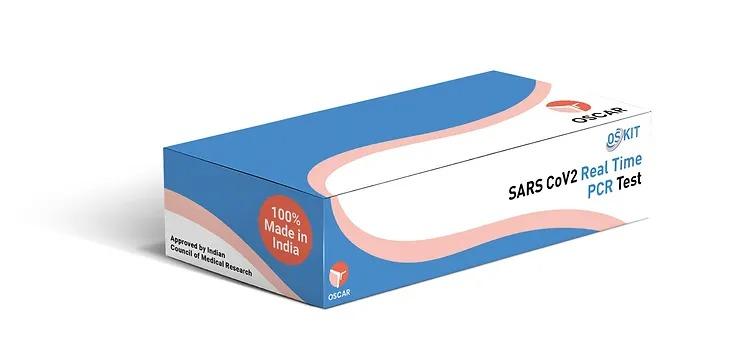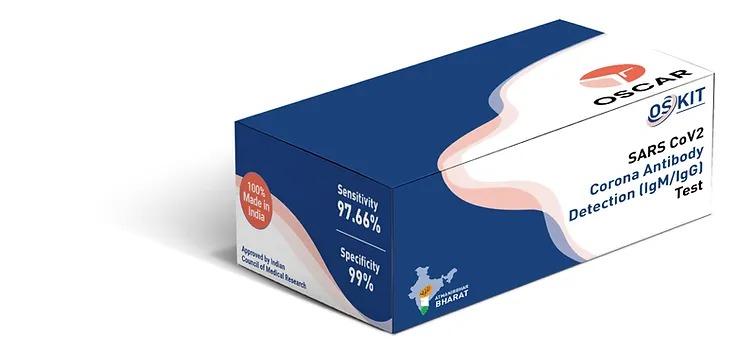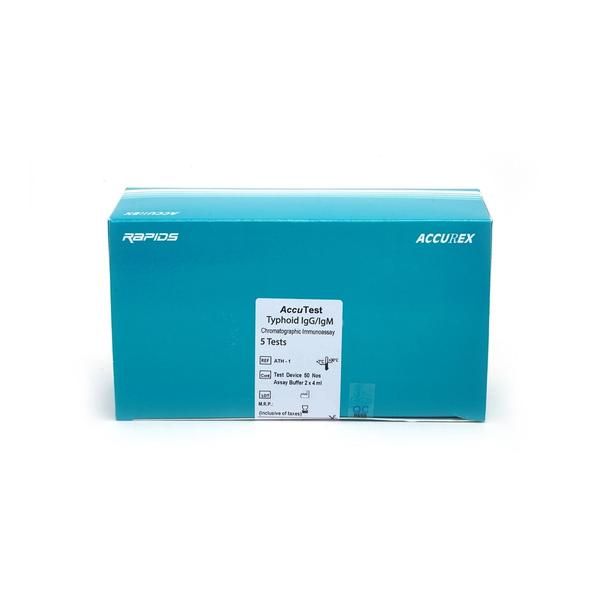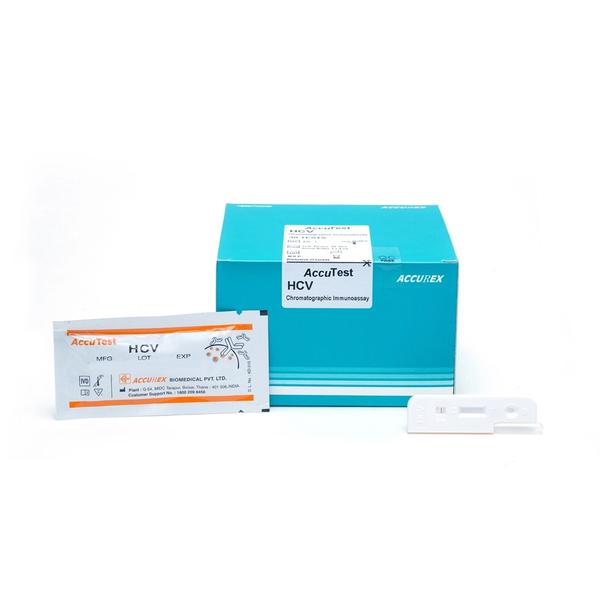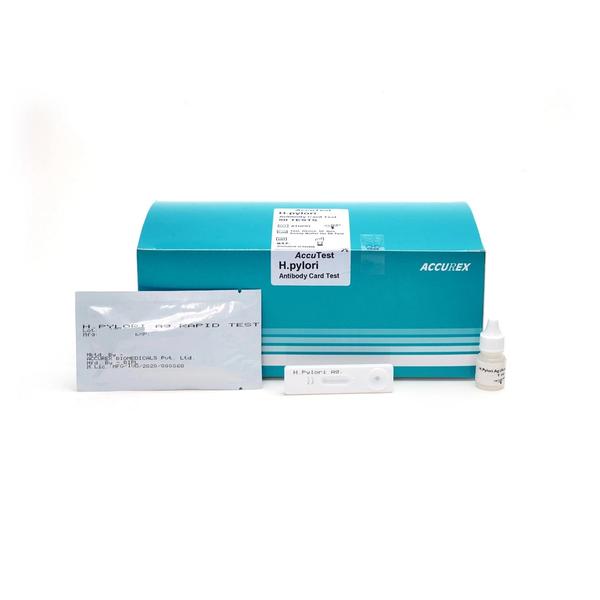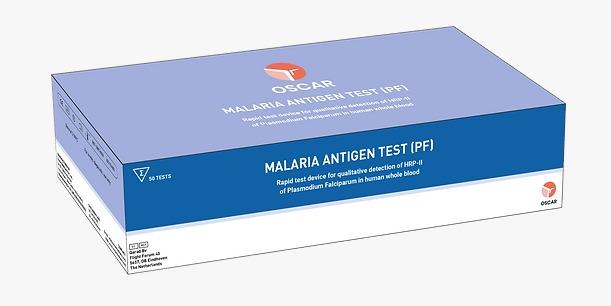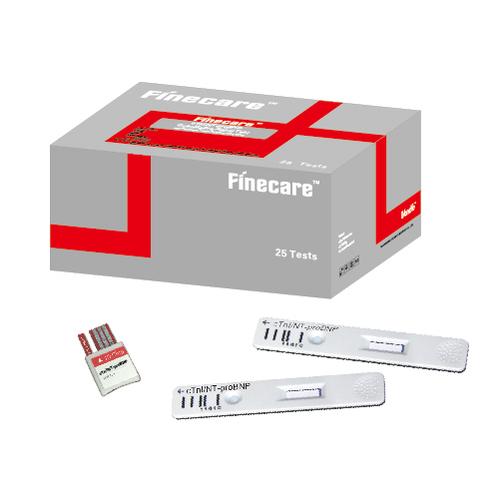Buy AccuTest HIV – 1/2 Ab Rapid Card Test (50 Tests) Online from Accurex. This Rapid HIV test is a visual, solid phase immunochromatographic assay for qualitative in-vitro diagnostic detection of antibodies against HIV-1 and HIV-2 in human serum/plasma. This HIV test may be used as an aid in diagnosis of HIV infection. In the HIV blood test – A reactive result should be confirmed by supplemental testing as part of a validated HIV testing algorithm. INTENDED USE: AccuTest HIV – 1/2 Ab test is a visual, solid phase immunochromatographic assay for qualitative in-vitro diagnostic detection of antibodies against HIV-1 and HIV-2 in human serum/plasma. The product may be used as an aid in diagnosis of HIV infection. A reactive result should be confirmed by supplemental testing as part of a validated HIV testing algorithm. INTRODUCTION: The Human Immunodeficiency Virus (HIV) is a retrovirus that infects cells of the immune system, destroying or impairing their function. The most advanced stage of HIV infection is Acquired Immunodeficiency Syndrome (AIDS). The general method of detecting infection with HIV is to observe the presence of antibodies to the virus by an EIA method followed by confirmation with any confirmation method. AccuTest HIV – 1/2 Ab is a simple, visual qualitative test that detects antibodies in human serum/plasma. The test is based on immunochromatography and can give a result within 15 minutes. PRINCIPLE: AccuTest HIV – 1/2 Ab employs chromatographic lateral flow device in a cassette format. Colloidal gold conjugated recombinant antigens (Au-Ag) corresponding to HIV-1 (gp120 + gp41) and HIV-2 (gp-36) are dry-immobilized at the end of nitrocellulose membrane strip. HIV-1 & HIV-2 antigens are bound at the Test Zone (1 & 2) respectively. Goat Anti-Mouse IgG antibodies are bound at the Control Zone(C). When the sample is added, it migrates by capillary diffusion rehydrating the gold conjugate. If there are HIV-1 or HIV-2 antibodies in sample, they will bind with the gold conjugated antigens forming particles. These particles will continue to migrate along the strip until the Test Zone (1 or 2) where they are captured by the HIV-1 or HIV-2 antigens generating a visible purple line. If the specimen contains antibodies to HIV-1, the specimen will bind to the 1 test line and produce line. If specimen contains antibodies to HIV2, the specimen will bind to the 2 test line. If there are no HIV-1 or HIV-2 antibodies in sample, no purple line is formed in the Test Zone. The gold conjugate will continue to migrate alone until it is captured in the Control Zone (C) by the Goat Anti Mouse IgG antibodies aggregating in a purple line, which indicates that the migration of liquid has been successful. The control line must be present for the test to be valid. PRECAUTIONS: 1. For best results, adhere to instructions provided. 2. All specimens should be handled as potentially infectious. 3. The test device is sensitive to humidity as well as heat. 4. Do not use beyond expiration date. 5. Do not use test kit if pouch is damaged or seal is broken. 6. Use test device immediately after removing from the pouch. 7. The components (test device and assay diluents) in this kit have been quality control tested as a standard batch unit. Do not mix components from different lot numbers. 8. The AccuTest HIV – 1/2 Ab Test devices should be stored at 4 to 30 °C. Do not expose the kit to temperature over 30 °C. 9. Specimen with extremely high concentrations of red blood cells, fibrin should be recentrifuged before use. 10. AccuTest HIV – 1/2 Ab Test Device (Serum/Plasma) is for in vitro diagnostic use only. 11. AccuTest HIV – 1/2 Ab Test Device (Serum/Plasma) will only indicate the presence of antibodies to HIV-1/2 in the specimen and should not be used as the sole criteria for the diagnosis of HIV-1, HIV-2, and/or HIV-1 subtype O infection. 12. For confirmation of reactive test results, specimens should undergo further testing using different assays, such as rapid diagnostic tests, EIA and/or Western blotting in accordance with a validated HIV testing algorithm. 13. As with all diagnostic tests, all results must be interpreted together with other clinical information available to the physician. 14. Results should not be used to determine the serotype of HIV infections TEST PROCEDURE: 1. Allow the test device, buffer and specimen to reach room temperature (15-30 °C) prior to testing. 2. Remove the test device from the foil pouch and use the test device as soon as possible (within one hour). 3. Place the device on a flat, dry surface. Label with specimen ID. 4. Holding the sample dropper vertically above the test disk, slowly transfer 1 drop (10µl) of sample in to the sample well, then add 2 drops of assay diluent (about 75 µl) and start the timer. 5. As the test begins to work, you will see purple color moving across the result Window in the center of the Test Disk. 6. Wait for the colored lines to appear. Interpret test results at 15 to 20 minutes. Do not interpret test result after 20 minutes. STORAGE AND STABILITY Store as packaged in the sealed pouch at 4-30 °C (storage in refrigerator is permitted). Do not store in the freezer. Protect the test kit from humidly. The test device is stable until the expiration date printed on the test kit and/or sealed test device pouch. Do not use beyond the expiration date. The test device must remain in the sealed pouch until use.
Send Message